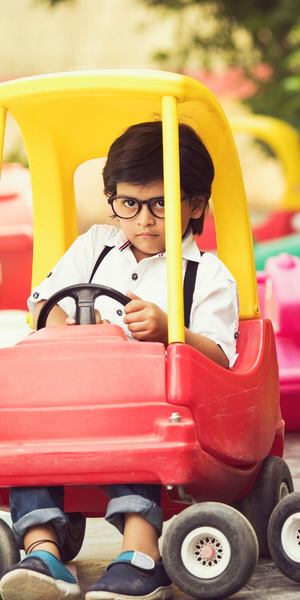Car Seats for Kids campaign embarks on collection and redistribution drive in Cape Town. Monday, 05 October 2015 – This October, in the spirit of National Transport Month and very importantly – Child Safety Month, Imperial Road Safety will be bringing their renowned Car Seats for Kids campaign to Cape Town. Imperial has partnered with the Western Cape Department of Transport and Public Works, as well as KFM Breakfast, to bring this exceptional road safety campaign to the region – following three consecutive, successful years in Johannesburg. “We believe that Cape Town is a region that boasts a spirit of giving back and as such, we will be bringing this great project to the region, expanding the campaign’s reach and driving further, national awareness,” says Niki Cronje, Group Marketing at IMPERIAL. Through this campaign, Imperial aims to contribute towards child safety on the roads by encouraging the donation of car seats by the public, which are then restored, safety checked and redistributed, to provide those children, who do not have a car seat or whose families can’t afford a new one, with the gift of safety. “We are thrilled to partner with IMPERIAL Road Safety on this worthwhile and crucial initiative. There are too often indications of the absence of child restraints amongst child passengers killed in the Western Cape, where road deaths per capita are approximately 38% lower than in South Africa in general. Children who are unrestrained, even on an adult’s lap, will be seriously injured or killed, even in a slight collision. We continue to appeal to parents and caregivers to buckle young children up in appropriate car seats to help prevent injury and death in a crash. Age-appropriate car seats are effective because the car seat harness and vehicle seatbelt are positioned over the parts of a child’s body that are most likely to absorb the force of a crash,” said Donald Grant, Western Cape Minister of Transport and Public works. “Our Safely Home campaign will be focusing on child road safety over the month of October, under the hashtag #SaveKidsLives, educating the public on how to protect our children against unnecessary injury. I am confident that our joint efforts will yield positive results, and save more and more young lives.” ”As a leader in mobility, we aim to educate consumers around the importance of car seats and strapping our children in, as well as to provide access to car seats for those that can’t afford them or haven’t yet realised their importance. This campaign comes at a critical time; Not only are road crash statistics are at their highest, but government have implemented new legislation that states that all children under the age of three need to be strapped into a suitable car seat and of course, is well aligned to Child Safety Month in Cape Town.” For road safety initiatives to make a real difference however, businesses and government need to join forces to effect change, and the Car Seats for Kids campaign is no exception. In light of this, the Cape Town Department of Transport and Public Works has endorsed this campaign within the region and have partnered with Imperial in the awareness drive towards safer roads for all. Furthermore, KFM Breakfast has come on board as the official media partner, aiding Imperial in driving awareness within the Cape Town region and encouraging consumers to get involved and donate their used car seats. Ryan O’Connor, KFM Breakfast Show Host says: “As a parent, I play a key role in keeping my child safe on the roads and feel privileged to be part of such a worthy campaign. During Transport Month and in the run-up to the festive season, I encourage you to join me – get involved in the KFM Breakfast Car Seats for Kids drive with Imperial and help protect our kids on the roads.” Imperial Road Safety is also proud to announce that it has partnered with some of South Africa’s most successful automotive brands within their group, to give the public a number of easily accessible drop off-points nationwide. Through this partnership, consumers – across the country – are now able to drop-off their old car seats at any of Imperial’s Hyundai, Kia and Renault dealers from 01 – 31 October 2015. Alternatively, they can drop these off at any of the activation points* during this time. In addition, to help manage the day to day collection and storage of the donated car seats, Imperial Logistics has come on board as the logistics partner, spreading the gift of safety across South Africa – a key function for a campaign of this nature. “There is no doubt that extending the reach of this campaign is critical in driving broader awareness and we are so excited that, this year, consumers from around the country can donate their car seats – regardless of the fact that the main activation will take place in Cape Town.” “Child safety on our roads is a key pillar of society, not to be left only in the hands of parents, but South Africans at large. We therefore are ecstatic that the department of transport has come on board and that together we are able to appeal to the public to go on and make a difference to a family in need by donating their used car seats this Transport and Child Safety Month,” concludes Cronje. The campaign will be at a number of Cape Town malls and schools – between 06h00 – 18h00, during October* on the following dates: Tygervalley Mall: Monday, 5 October 2015 Blue Route Mall: Tuesday, 6 October 2015 Table View Shopping Centre: Wednesday, 7 October 2015 Somerset Mall: Thursday, 8 October 2015 Ratanga Junction: Friday, 9 October 2015 Tygervalley Mall: Monday, 12 October 2015 Silverlea Primary: Tuesday, 13 October 2015 Table View Primary: Wednesday, 14 October 2015 Paarl Gymnasium Primary: Thursday, 15 October 2015 Ratanga Junction parking: Friday, 16 October 2015 For more information please visit the Imperial website by clicking here

















